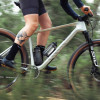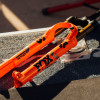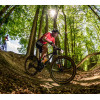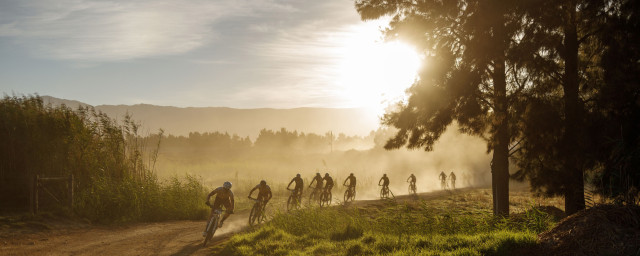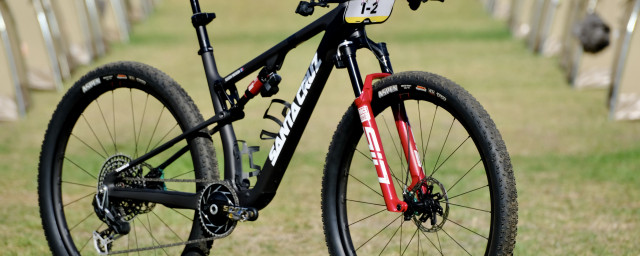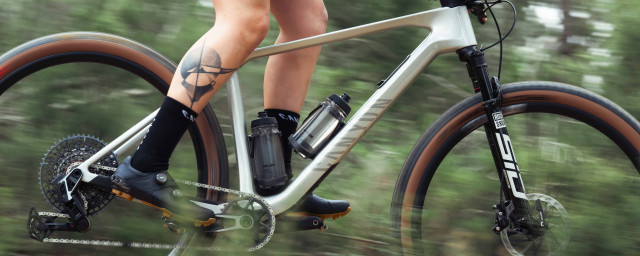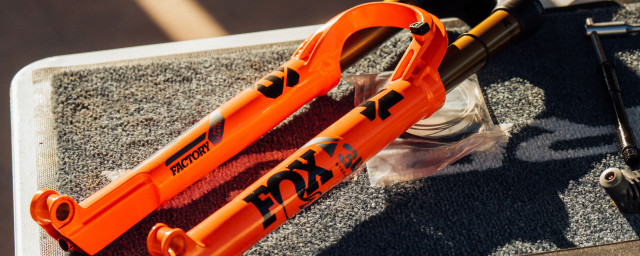Electric mountain bikes - everything you need to know
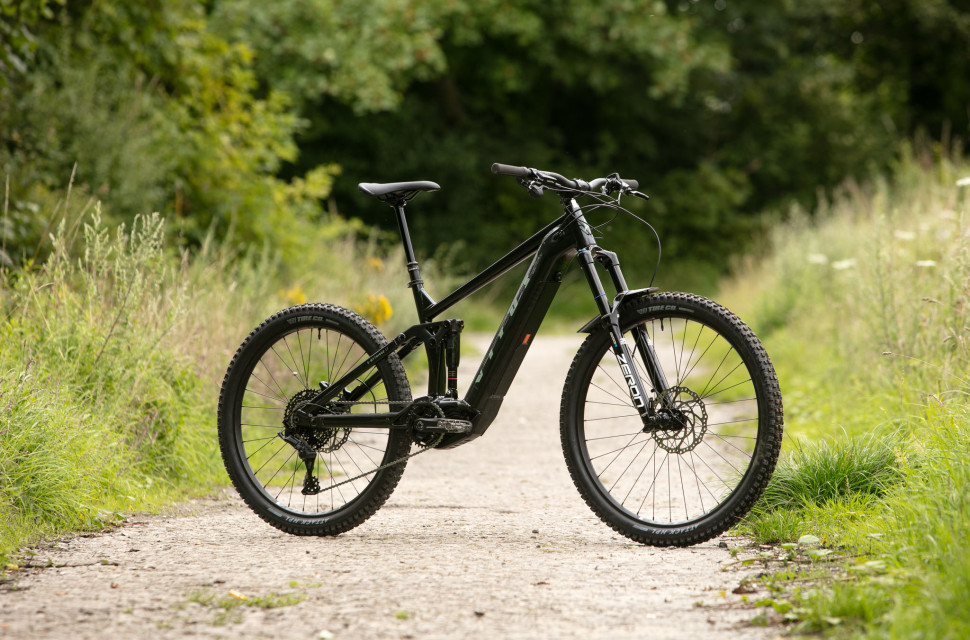
The electrically assisted bike is here to stay, there's no disputing it. What started as a rudimentary motor and battery bolted to a frame has since morphed into a viable concept with some impressively stealthy bikes now available. And they ride just like a regular, pedal-assisted bike. The strategic use of carbon fibre has helped drop grams and clever engineering evenly distributes weight over both axles making for a balanced ride.
- Welcome to Electric Week - a celebration of the e-MTB
- The anatomy of an e-bike
- How much do e-bikes cost to maintain long-term?
Motors have got stronger, batteries more resilient, and the running gear and components bolted to the frame are burlier and, in some instances, even e-MTB-specific – something which instils an added layer of assurance for those heavy-hitting trail days.
e-MTB styling and aesthetics
The e-MTB bike choices begin with a question of suspension. Front suspension bikes or hardtails have a suspension fork at the front and a rigid rear frame – fairly conventional, easy to understand, easy to ride, cheaper and usually lighter than comparable specification full-suspension models.
Full suspension e-MTBs have a linkage rear end that uses a shock absorber to isolate the wheel. Full-suspension bikes are heavier, more expensive and more complex to set up. They’re masses of fun to ride though and can handle a lot more than you'd expect.
The hardtail is a great choice for milder trails. It’ll give you the traditional mountain bike experience with the added climb crushing addition of electrical assistance.
If you’ll be hitting the singletrack trails and enjoy the odd jump or two or like the bike park experience, a full-suspension is the way to go and there are myriad options available to sate your needs.
Wheel and tyre size
There was a time when every mountain bike had 26-inch wheels. They're rare now, and the new standard sizes are 27.5-inch and 29-inch or a combination of the two, which is known as a mullet setup.
Depending on the big, its travel and intentions, tyre sizes can vary somewhat. Trail tyres have a width of 2.4 - 2.5in but we're seeing a trend where tyres as wide 2.6 - 2.8in are now standard fare – this can be seen on the Pivot Shuttle LT Pro XO e-MTB we recently reviewed.
Look for a front tyre with a tread that has strong well supported, well-defined shoulder knobs. These will help give you the grip and confidence to learn hard on the fork into the turns without the danger of sliding out.
Look for tubeless ready wheel and tyre options. This means the wheel can be run without an inner tube. Tubeless tyre systems use a liquid tyre sealant inside the tyre, which is able to self-seal most ordinary punctures. They can often do this without noticeable air loss.
Frame material
Unless you’re desperate to spend lottery-style cash on your bike, you’ll be looking at an alloy frame. Carbon fibre now dominates the e-MTB market thanks to carbon fibre production innovations and contemporary frame engineering. While carbon fibre is still a pricey material, we have seen a gradual reduction in retail pricing.
Alloy frames open e-MTB ownership to a broader dynamic, and the cost for tweaks to alloy frame welding jigs is much less than the cost of building new carbon-fibre frame moulds. For this very reason, there are more deals to be had on alloy e-MTBs, the bulk of which are handsomely appointed when it comes to specification. Shop around, take your time and you will find a killer deal
Motor
The motor on any e-MTB with serious off-road intentions is positioned at the cranks. This is called a mid-motor design for obvious reasons. Some e-bikes have their motor located in the front or rear hub but these motors are much less effective for off-roading as they compromise the handling (at the rear) or the performance of the suspension fork (at the front).
Expect a high-performance 250w motor with sensors for torque and cadence to supply the data it needs to know how much electrical assistance you need and when you need it. Major manufacturers are mostly using the same three or four motors and batteries, and providing you buy from a major, recognised mountain bike brand – generally those who are already famous for standard mountain bikes. You’ll not go far wrong.
You can choose the level of power assistance via a display or remote somewhere on the handlebars. Selecting a more economic power level with less assistance means you’re working harder – much like regular cycling but with the edge taken off a bit. You might say like having the wind at your back.
Selecting a mode for more electrical assistance means you’re able to pedal with the feeling of having a superior level of fitness. And at maximum assistance (around 300-400 per cent) you’re still required to pedal hard if you want to go really fast, but at moments of key acceleration – up steep climbs or out of corners – you’re going to feel the engine gives you a solid kick of power as you apply pressure to the pedals. Remember it's only there up to 15.5mph.
Batteries
The battery for an e-MTB is usually located on the down tube, or increasingly built into it. For off-road mountain biking, the low relatively central position of both a mid-mount motor and downtube battery allows for a balanced and low centre of gravity and that means it’s easier to hustle the bike around trails with less physical effort and greater stability.
A bigger battery is always better for mountain biking, as it’s more power-hungry than road riding. Most e-MTBs will come with a 400Wh or 500Wh battery, with some now sporting a whopping 700-750wh unit. The battery is the most expensive single component, so cheaper bikes tend to have smaller batteries.
How long will the battery last? It’s down to the level of electrical assistance you choose, your weight and the topography of your routes (hills burn power much faster than flat ground). The surface you ride on makes a difference, too, soft off-road conditions are more power-hungry than hard, smooth Tarmac.
Let's not forget maintenance and how you store your bike either – both are contributing factors to battery health and longevity.
Dashboard
Most e-MTBs use an LCD screen mounted somewhere on the handlebars and often a remote switch by the handlebar grip. You get the normal data you’d get from a computer (speed, distance, battery) plus the battery status, power reserves remaining and, of course, the power mode you’re currently in. Button presses to toggle between modes are easy, and within two minutes most people are away and using them instinctively.
Suspension
Suspension encompasses the fork and, in full-suspension bikes, the rear shock, both utilising an air spring and an oil damper. Travel is the amount the fork or rear suspension can compress when it runs over an obstacle in the trail. It’s measured in millimetres.
Normally, for a non-powered cross-country bike (hardtail or full suspension), 100-120mm is optimal. For hardtail e-MTBs, 120-140mm might not seem a big jump, but a little extra helps the fork from diving through its mid-stroke sweet spot the moment you start going quickly or hitting successive bumps.
For full suspension e-MTBs, 140-160mm of travel front and rear is a great place to start. This added travel allows for a more supple feel, bigger individual hits and better handling of successive hits. Beyond that, downhill-specific e-MTBs will have up to 200mm of travel. They’re designed for the steepest mountain tracks, big jumps and hero-sized hits, so they’re not very ridable on regular mountain bike trails.
Look for adjustments on the suspension. Rebound can usually be adjusted; less rebound means the fork returns to its full (static) length more quickly – ideal for soaking up repeated hits in quick succession – but too little will make the fork feel very springy and may bounce you off the trail. Different riding styles and rider weights require different settings.
Compression damping dictates the speed the fork can respond when hitting an obstacle. Today it is more common to find a riding-style switch that gives you a pre-set level of compression damping based on the terrain.
Lockout is sometimes offered on front and rear suspension. It can be useful when riding on the road where the requirement for lots of suspension travel is nil. Sometimes this is a switch, other times a lever. The action is usually ‘on’ or ‘off’.
Dropper seatposts
Many e-MTBs will have one of these fitted as standard. Dropper seatposts feature a hydraulically operated piston, on top of which is mounted the saddle. You operate a switch to lower (or raise) the saddle height.
Droppers help you negotiate steep downhill sections without the saddle having to remain at full pedalling height. This removes the chance of the saddle hitting your backside and potentially sending you over the handlebars.
Brake system
Any trail-ready e-MTB comes with disc brakes and hydraulic units are much better than cable-operated ones. Look for models by Shimano, SRAM, Magura or Tektro (TRP). Spares and bleeding equipment for big brands are widely available.
Because of the increased weight of an e-MTB and the fact that the average speeds are higher, you’ll need larger disc rotors. 160mm diameter rotors front and rear are standard on most regular cross-country bikes with 180mm on the front for trail bikes.
You should be looking for nothing less than 180mm rotors front and rear but we recommend 200mm as a good starting point. This is because bikes are heavier than traditional, analogue mountain bikes and the speeds at which they descend require confidence and pinpoint stopping performance.
Bikes sporting suspension travel of 170mm and upwards will often be specced with rotors of 220mm front and 203mm rear.
Transmission
The transmission won't be any different to what you'll find on a regular mountain bike. Shimano and SRAM dominate and both are excellent. Look for a wide-range rear cassette at the rear. You’ll get ten, eleven or twelve rear sprockets; look for the largest rear sprocket of around 50-52 teeth for a proper big hill-friendly set of ratios, but you can get away with a 40-tooth granny gear.


